Successful Global Supply Chain Management
The value of effective global supply chain management is increasing each year, as the logistics industry is finally making a recovery after COVID. In the US, supply chain gains accounted for 8.7% of the entire GDP, and the number is only expected to grow. This percentage shows that people tend to consume more and more. And along with the need to get the deliveries on time, customers seek a seamless and superfast shopping experience.
According to Zendesk, customer-centricity (making your client’s customer journey the priority) earns retail companies 60% more profits, and logistics are a big factor in customer satisfaction. Indeed, companies with high-performing supply chains get more revenues, than the average logistics performers.
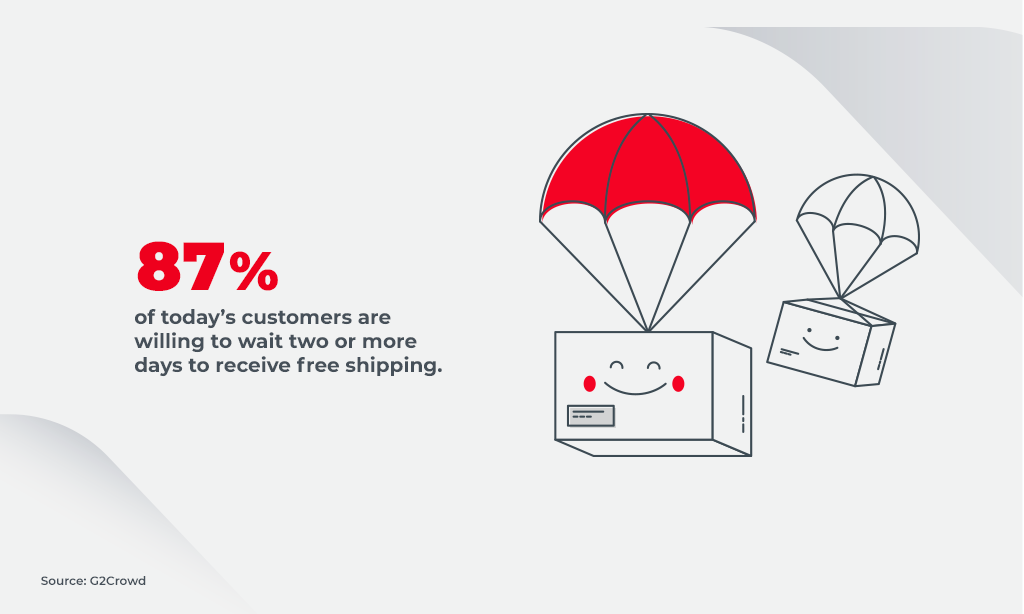
With this in mind, leaders have to find out the ways to transform their global supply chain management and to adapt to growing customer mandates.
What Is Global Supply Chain Management?
Global supply chain management generally refers to all processes regarding a product’s lifecycle, from the concept of its creation to distribution to endpoints. Global SCM is aimed to enhance the productivity of each stage of this lifecycle, get rid of inefficiencies, and deliver the products timely and seamlessly.
The traditional global supply chain comprises four critical stages: supplier, manufacturer, retailer, and end-user.
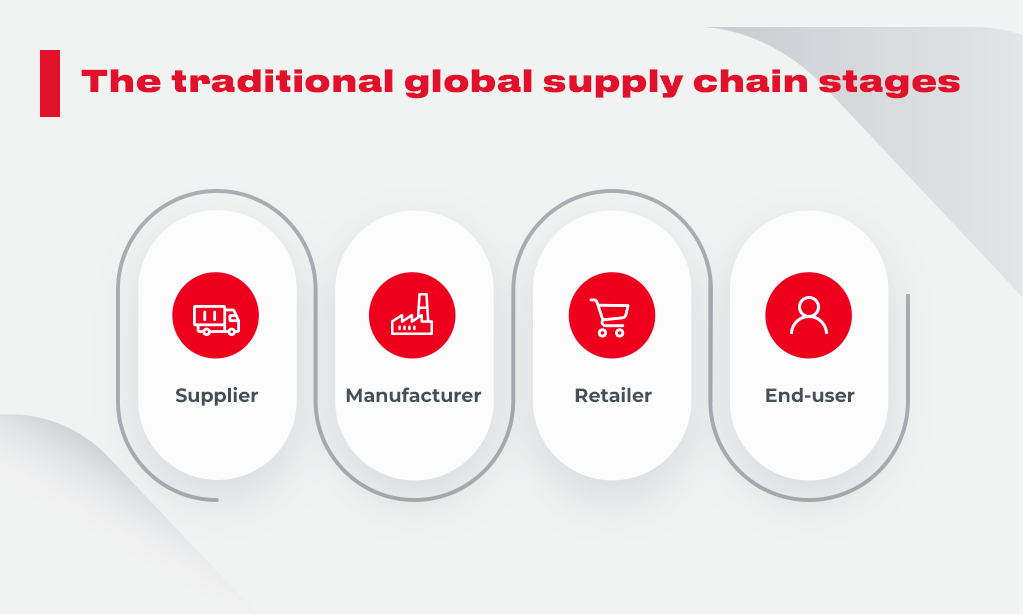
The value of effective global supply chain management is increasing each year, as the logistics industry is finally making a recovery after COVID. In the US, supply chain gains accounted for 8.7% of the entire GDP, and the number is only expected to grow. This percentage shows that people tend to consume more and more. And along with the need to get the deliveries on time, customers seek a seamless and superfast shopping experience.
According to Zendesk, customer-centricity (making your client’s customer journey the priority) earns retail companies 60% more profits, and logistics are a big factor in customer satisfaction. Indeed, companies with high-performing supply chains get more revenues, than the average logistics performers.
Market Overview: Global Supply Chain Management Software
The current landscape of supply chain management software is all about AI-driven predictive analytics for demand forecasting, real-time visibility through IoT and cloud integration, and sustainability features to optimize eco-friendly practices.
AI in particular is the new superstar of supply chain management. Generative AI alone could add the equivalent of $4.4 trillion to the world economy by 2040. Artificial Intelligence can power robots, accelerate data analysis, and imitate human communication on the simpler client-facing tasks. It is definitely here to stay and grow.
Seamless omnichannel integration and robust cybersecurity measures are also paramount for efficient operations and maintaining trust across global supply networks. The international shift to omnichannel retailing that’s been happening over the years has made a tangible impact on how supply chains and warehouses function. According to FM Logistic, 60 % of companies stated that an omnichannel supply chain ensures efficient stock management.
Blockchain has been quietly on the rise for enhanced transparency, but not without challenge. The industry still lacks the overall understanding and experts to efficiently implement this technology, and those who decide to commit to implementation need to brace for regulatory challenges and interoperability issues. The end result is worth it, though – blockchain-powered transactions are next level in terms of security and trackability.
Benefits Of Global Supply Chain
Why is effective global supply chain management so important? Companies who have debugged SCM can reap their benefits, from lower supply chain costs to faster transactions lifecycle and thus faster revenues. Here are the key advantages of streamlined SCM.

Improved Overall Effectiveness
With real-time tracking the availability of goods in stock, companies can better conduct a demand-planning and source raw materials from a reserve supplier if needed. This reduces the number of delays and customer dissatisfaction.
Thus, supply chain management software underpinned by smart solutions results in improved overall efficiency.
Better Management of Demand Fluctuations
Supply chain management is a critical milestone in operating a product company, but demand forecasting can be very tricky. Every business leader has probably dealt with the so-called bullwhip effect. Put simply, this effect refers to spikes and drops in customer demand which literally causes waves hitting the supplier of raw materials.
With robust SCM software in place, supply chain managers have access to a constant stream of real-time data. This data can be leveraged to better forecast demand and promptly respond to ever-changing consumers’ needs. This way, leaders overcome challenges like the bullwhip effect.
Optimized Transportation Management
The global supply chain management grows aggressively along with the spending on deliveries. ING states that the transport and logistics sector will see growth of 4% in 2023 and 3% in 2024.. Another article states that last-mile delivery in particular is rife for optimization, accounting for approximately 41% to 53% of the total supply chain costs.

Supply chain managers often adopt transportation management software (TMS) to have the utmost control over transport and reduce associated costs. The figures below demonstrate the beneficial effect of TMS:
- According to Uber Freight, their consulting team increased a client’s annual savings by 13% after leveraging TMS and conducting a transportation assessment.
- TMS solution can help shippers to reduce their bills by 90-95%.
The TMS market across the globe was USD 10.8 billion in 2022 and is projected to grow at a CAGR of over 9.5% between 2023 and 2032, meaning it’s high time for businesses to invest in the right technologies.
With TMS, you can track your shipping operations anytime and in real time. You gain better control over fleet maintenance, fuel spending, route planning, communication between suppliers, and more.
Better Risk and Threat Management
Access to real-time supply chain data, on-time analytics, and backup planning can help managers to run impeccable supply chain risk management, meaning they will be able to foresee unprecedented situations and disruptions that may cause adverse effects on the entire business.
By implementing the Internet of Things (IoT) solutions, you get improved transparency and gain more control of your operational activities. Telematics devices can help companies mitigate such risks as delays, product losses, events that compromise the quality of goods, and other concerns that arise during transportation or inventory management.
In addition, IoT is used to identify vulnerabilities in the supply chain management system by applying machine learning, cryptographic hardware monitoring, and other techniques to alleviate the results of unexpected malicious events.
Reduced Overhead Costs
The precise demand forecasting allows companies to cut the overhead expenses associated with overstocking. When there is an excessive amount of inventory in your warehouse, you pay extra for their storage. Thus, knowing the demand, you keep the right number of products with higher velocity and generate more revenues.
Adopt automation solutions to reduce these costs. For example, a warehouse management system (WMS) can improve your order shipments’ speed and increase the efficiency of business operations. The integrated WMS solution can elevate warehouse productivity by 30-50% and reduce costs by as much as 70%.
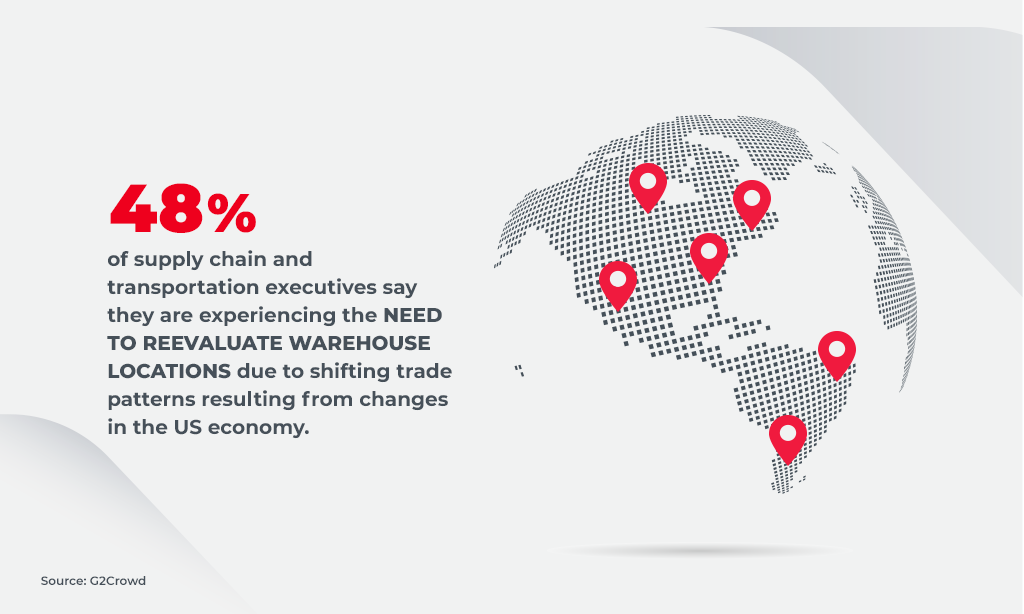
The automated tools like sorter and conveyor systems can also contribute to inventory optimization, by driving efficiency, speed, and accuracy in warehouse operations. Therefore, the value of WMS software is that it aids business executives in controlling inventory, handling day-to-day activities regarding inventory shipping, storing, and sorting.
Sooner Achieving of Positive Cash Flow
All advantages described above drive companies’ leaders to make decisions faster and more accurately as disruptions occur, easier manage warehousing, inventory, and transportation issues, better forecast demand. Moreover, they also contribute to achieving positive cash flow (CF).
For example, partnerships with trusted suppliers mean fewer disturbances and more satisfied consumers. This also allows you to issue invoices and get paid faster. Digital solutions foster budget savings, reduce wasteful spending, minimize overhead expenses, and contribute to a faster return on investment (ROI).
Challenges in global supply chain management can turn into benefits if having the right instruments at hand. Consider integrating dedicated SCM software with warehouse and transportation management functions to have a flawless supply network.
Reshaping Future Via Modern Global Supply Chain Solutions
Global supply chains have become highly complicated and crucial for many businesses to stay competitive. Such interconnected and sophisticated nature of cross-border supply chains makes them vulnerable to multiple risks, including cybersecurity threats, delays, unforeseen events, and many other adverse impacts.
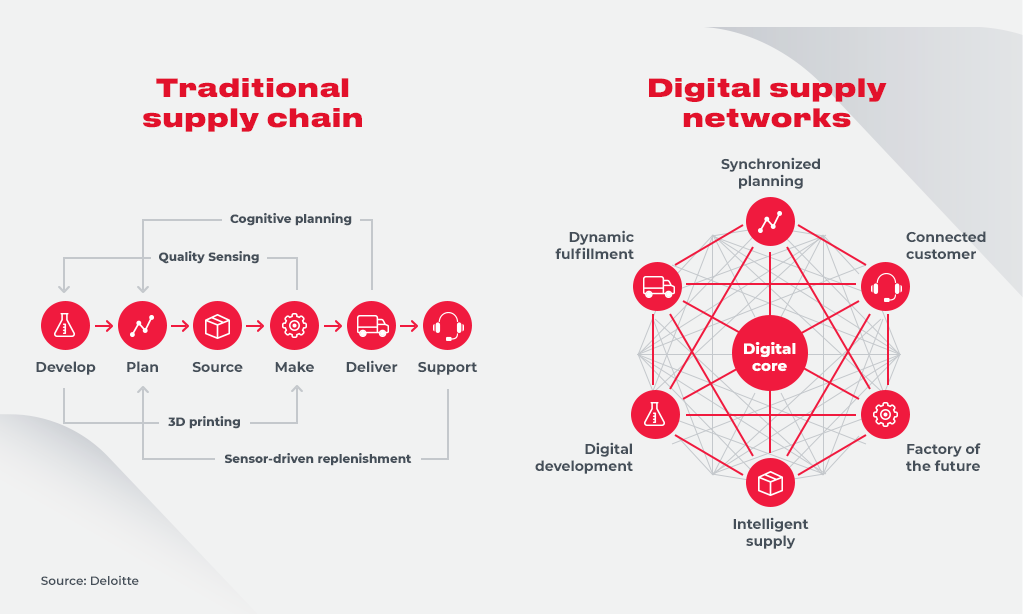
Luckily, global supply chain tech can drastically increase visibility across the entire chain, making it agile and resilient. According to Flanders Make, 55% of companies recognize the value of digitalization, and more than 70% of companies expect AI and robotization to shape the future of business operations. The disruptive 4.0 technologies can give businesses great visibility and control across all logistics processes. Let’s discuss them in more detail.
Internet of Things
IoT is a well-developed market, projected to grow 17% annually till 2030 and spawning its own internal trends like collaborations with AI-powered technologies and a boost in its use for cybersecurity purposes.
What matters most for supply chain, IoT collects tons of data that has to be analyzed. That’s why supply chain managers have to find ways to exploit it in the most effective way. For example, not so long ago the IoT data was crucial for route optimization, risks mitigation, better demand planning. Today’s IoT devices are used to gather information on individual drivers, their health state, the conditions of tires on a vehicle.
AI and ML
The applications of Artificial Intelligence and Machine Learning are vast. Let’s explore some of them in this section.
Accurate and Fast Decision Making
Big trucking carriers usually have to handle thousands of repetitive and complicated tasks requiring a lot of input data to make the right selection. For example, to pick a reliable carrier, a company needs to seek through numerous possible providers and routes, which can take nearly 5 minutes. With AI & ML instruments, managers can narrow the choices to several seconds making the most appropriate choice.
Generative AI for Logistics and Supply Chain
The recent boom of Artificial Intelligence is impossible to ignore. A McKinsey survey revealed that more than two-thirds of their respondents in nearly every region have admitted that their organizations are using AI, and that includes generative algorithms. A whopping 72% of companies plan to increase their investments in generative AI integrations.
For supply chain and logistics companies, Generative AI is a pivotal tool for transforming traditional supply chain practices. It is a multi-faceted tool that is used for fraud detection, client communication, inventory optimization, and even ethical sourcing.
Benefits Of Transformational Technologies
Transformational technologies can provide supply chain companies with elevated performance and speed, boost transparency and accuracy, make the business more reliable and flexible, and elevate both customer satisfaction and employee morale. Let’s take a closer look at each of these individual benefits.

Elevated Performance and Speed
More than half of respondents report better productivity rates in their supply chain teams with the use of Blockchain, AI, ML, and telematics devices. These techs enable greater visibility, better route planning, and improved forecasting of future customer demands.
Transparency and Accuracy
Blockchain and IoT can offer real-time tracking of any parcel, up to its identification number. It is also easy to monitor the goods conditions as well as possible handoffs (when a task is delegated to another person and becomes most vulnerable). Also, 57% of executives reported that accuracy was a vital driver of value, which can be achieved via better transparency.
Employee Satisfaction
Almost 50% of surveyed said they lack staff, namely fleet drivers and warehouse operators. At the same time, employees are reported to feel happier with their jobs as they receive the right resources to optimize their work. That means companies that embrace new technologies not only add value to the business but are able to better retain their employees.
Customer Satisfaction
Another crucial benefit is customer satisfaction. 53% of the company’s leaders harness technology to improve customer experience. Using drones, for example, makes deliveries cheaper and leads to higher customer loyalty. Also, the real-time parcel tracing contributes to a trusted relationship between seller and buyer.
Reliability and Flexibility
More than half of the interviewed executives see the improved uptime (the time the system works without interruptions) and flexibility. This is mainly possible thanks to IoT devices, supported by AI and human involvement. With a more precise understanding of vehicle functioning, fleet managers will be able to mitigate or prevent the transport’s potential failures.
Primary Global Supply Chain Strategy for a Better Management
All changes that have already happened and continue to disrupt the global supply chain management have forced businesses to adapt and respond quickly.
The best and the strongest organizations survive thanks to the carefully designed supply chain strategy. The Oracle suggests some tactics to achieve better SCM.
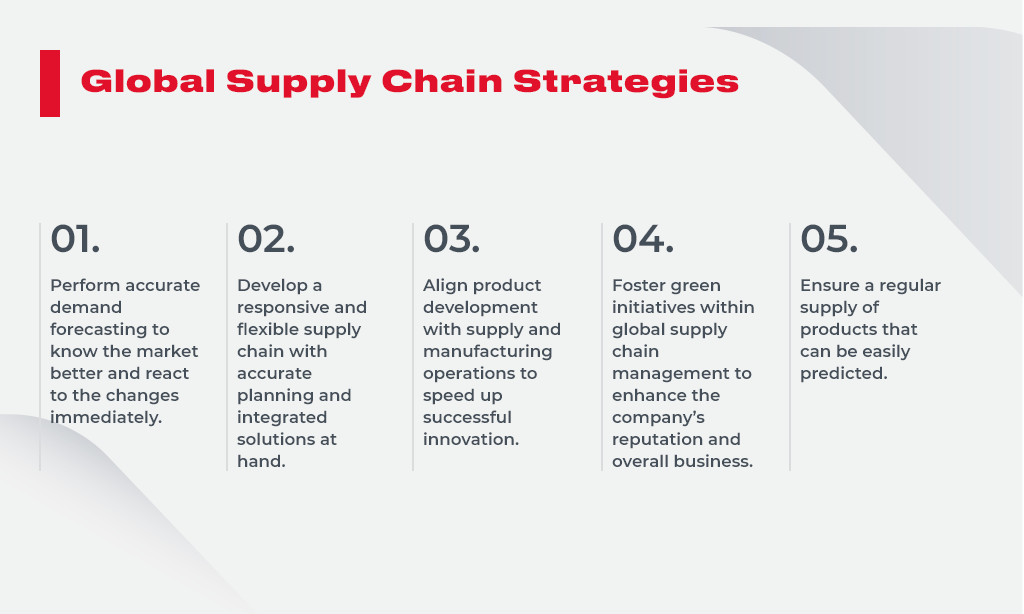
1. Perform accurate demand forecasting to know the market better and react to the changes immediately.
Precise forecasting and emergency planning can provide a full picture of your business processes and immediate response to disruptions like natural disasters, political movements, communication problems with suppliers, and other factors that may affect production and logistics activities.
Leaders can also revise their pricing and advertising strategies to adapt to demand, promote new products faster, accelerate revenue streams, or even increase margins for a popular product with insufficient market supply.
The most important here is to be ready to use unprecedented events in your favor and mitigate the possible adverse effects so that your company stays on top and succeeds.
With the rise of ambitious technologies such as Blockchain, IoT, robots, the supply chains become more resilient, flexible, visible, and easy to manage.
2. Develop a responsive and flexible supply chain with accurate planning and integrated solutions at hand.
Once company leaders have a better vision and can instantaneously reshape the demand and risk, the next step is to build supply chains that match to ever-changing industry events. Organizations must deploy robust planning tools and constantly regulate operations to ensure the adaptiveness of SCM.
The new model of global supply chain management addresses new changes and rapidly responds to them, which allows you to minimize or even reduce breakdowns across the whole network.
The integration of edge tools, like autonomous cars, interconnected devices for warehousing and inventory management, Blockchain smart contracts, AI-based drones, give businesses:
- Outstanding visibility.
- Better collaboration across the entire chain.
- Easier prediction of sourcing and supply events.
- Just-in-time production.
- Real-time transportation tracking.
- Effective warehousing.
- Accurate decision-making.
3. Align product development with supply and manufacturing operations to speed up successful innovation.
Embracing innovations helps corporations to be competitive. But to succeed, the goods must be designed cost-effectively, in the proper place, and at the right time. Product management should be optimized with suppliers, manufacturers, and transportation procedures. The actual budget has to be properly analyzed to keep balance across the full-cycle business.
Besides, innovative products and competitiveness are closely connected to the choosing and maintenance of suppliers and techs. If a company can control the information, people, operations, and decisions associated with the product lifecycle, it can become an industry leader.
4. Foster green initiatives within global supply chain management to enhance the company’s reputation and overall business.
Organizations that strive to be socially and environmentally friendly have a better reputation, achieve significant competitive benefits, fine-tune production and communication with suppliers, and achieve higher employee engagement. Sustainable efforts in SCM may bring many new opportunities:
- Executives need to integrate a green approach into their SCM as a core element of logistics. Adopting green initiatives can bring supply chain processes to the next level, from cost-effective alternative sources of power to better company image.
- Then, executives should address the problem with excessive energy consumption and setting real-time visibility. This enables the decrease of carbon emissions, conscious use of power sources, less waste with recycling materials, and route optimization.
- Businesses can stay afloat and outrank rivals by continually improving via regular assessments, audits, and new skills. Through regular compliance audits and defining best practices, a company can easily keep supply chain operations eco-friendly.
5. Ensure a regular supply of products that can be easily predicted.
Without a stable supply of goods, companies won’t be able to reach the appropriate service levels. This might lead to dramatic losses and, which is more serious, supply shortages.
That’s why responsible managers must improve operational performance to ensure flawless supply chain activities. With reliable SCM software, a company has all production processes synchronized and integrated with the demand-planning procedures.
Summary
Hopefully, the article has given a profound understanding of the global supply chain and the way it works. Today, the supply chain software development is a key to fighting off the logistics challenges. Here we mean adopting technologies that have proved to be efficient in enhancing the global supply chain management, such as:
- Artificial Intelligence, particularly Generative AI, for automation and efficient demand forecasting.
- IoT devices for 24/7 live tracking of warehousing, transportation or inventory management.
- Robotics and AI-driven tools to replace manual and repetitive tasks that decline human involvement.
- Blockchain smart contracts for instant and secure collaboration between international stakeholders.
To step up the transformation within supply chain management, one needs a reliable IT partner. Innovecs specializes in providing custom supply chain and logistics software to clients from all over the world.
Our tech team is highly skilled in developing software for projects of varying complexity. Innovecs is ready to collaborate with growing startups that require custom SCM solutions, based on disruptive techs like Blockchain or AI. Or if you are a large organization requiring integrated supply chain solutions, Innovecs is here to help.